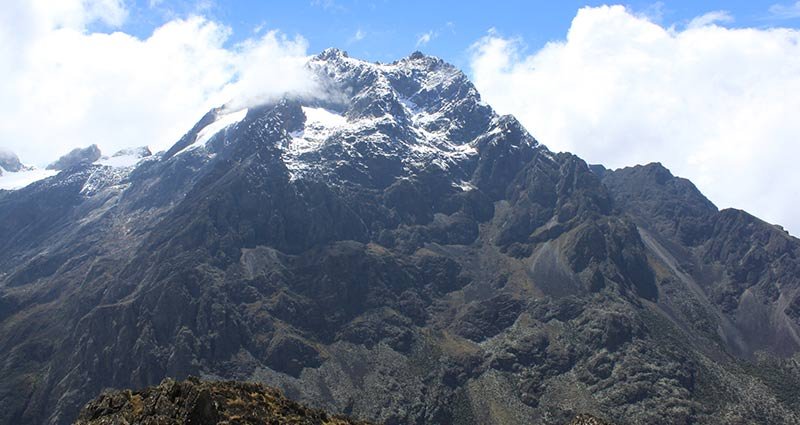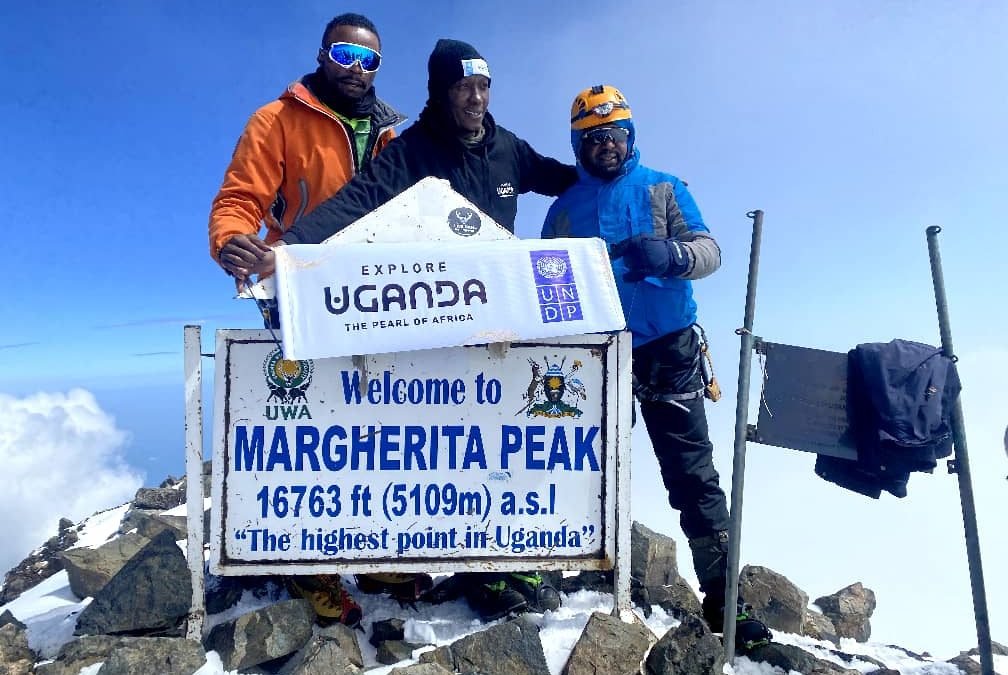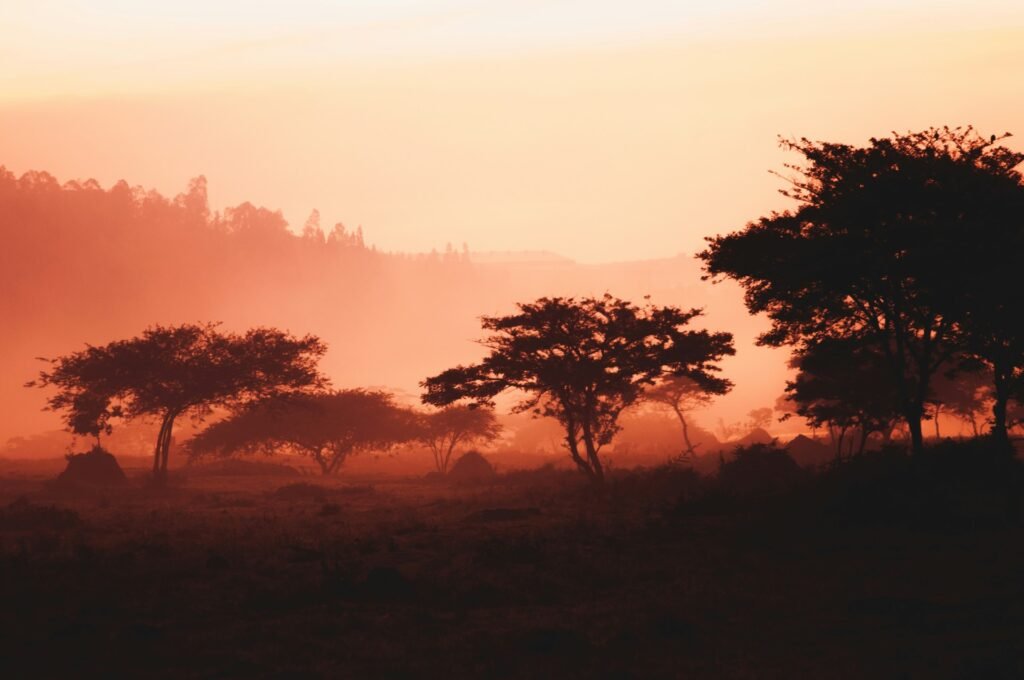Hiking and Nature Walks in Uganda:
- Home
- Destination
- Hiking and Nature Walks in Uganda:
Hiking and Nature Walks in Uganda, Discover the Pearl of Africa on Foot
Entebbe, a charming lakeside town nestled on the shores of Lake Victoria, is one of Uganda’s most beautiful and underrated destinations. Located just 40 kilometers from Kampala, Entebbe is home to Entebbe International Airport, making it the first stop for most travelers visiting the Pearl of Africa.
With its serene atmosphere, lush botanical gardens, stunning lake views, and wildlife encounters, Entebbe offers the perfect blend of relaxation, nature, and adventure. Whether you’re arriving in Uganda or wrapping up a safari, Entebbe is the ideal place to unwind and explore.
Uganda is a land where volcanoes touch the clouds, crater lakes shimmer in the sun, and lush forests whisper ancient secrets. Known as the “Pearl of Africa,” this East African gem is an unsung paradise for hikers, trekkers, and nature lovers. Whether you’re scaling misty mountain peaks or wandering through wildlife-rich forests, hiking and nature walks in Uganda offer authentic eco-tourism adventures far from the crowds.
From the legendary Rwenzori Mountains (Mountains of the Moon) to the scenic slopes of Mount Elgon, and the tranquil Mabira and Bwindi forests, Uganda is home to some of the best hiking trails in Africa. These treks allow travellers to connect deeply with nature, meet local communities, and enjoy eco friendly tourism at its finest.
Here’s a complete guide to the top hiking and nature walk experiences in Uganda, plus helpful travel tips and top-rated locations to get your boots muddy.
Rwenzori Mountains, The Ultimate Alpine Trekking Adventure
If you’re looking for serious mountain trekking in Uganda, the Rwenzori Mountains National Park is your holy grail. Located in western Uganda along the border with the Democratic Republic of Congo, the Rwenzori’s are a UNESCO World Heritage Site and home to Africa’s third highest peak, Margherita Peak (5,109 meters).
Also known as the “Mountains of the Moon,” the Rwenzori’s are famous for their snowcapped peaks, glacier lakes, and otherworldly vegetation zones ranging from tropical rainforest to alpine moorland. The most popular trek is the 7 to 9 day Rwenzori Central Circuit, which takes you deep into Uganda’s highest mountain range.
These treks are operated by certified guides through Rwenzori Trekking Services or Rwenzori Mountaineering Services and require moderate to high fitness. But the rewards? Unmatched wilderness, zero crowds, and the bragging rights of conquering one of Africa’s most dramatic landscapes.
Mount Elgon National Park, Crater Rim Trails and Caves
On Uganda’s eastern border with Kenya lies Mount Elgon, a massive extinct volcano with the largest volcanic base in the world. Though less well known than Kilimanjaro, Mount Elgon is a top hiking destination in Uganda for those seeking less crowded, high altitude treks.
The Sipi Trail is the most scenic route and can be completed in 3 to 5 days, culminating at Wagagai Peak (4,321 meters). Along the way, hikers encounter tumbling waterfalls, prehistoric caves, hot springs, and panoramic views of the Karamoja plains. The lower slopes are ideal for day hikes and community eco tours, especially around the Sipi Falls area.
Best of all, Mount Elgon’s moderate altitude makes it accessible to a wide range of trekkers no technical climbing required!
Bwindi Impenetrable Forest, Jungle Hikes and Wildlife Encounters
Bwindi is best known for its gorilla trekking, but this UNESCO World Heritage rainforest also offers some of Uganda’s most immersive nature walks and short hikes. These trails are a dream come true for nature lovers, offering close encounters with rare birds, primates, butterflies and exotic flora.
Popular trails include:
Munyaga River Trail; Easy and perfect for spotting monkeys and waterfalls.
Rushura Hill Trail; Offers sweeping views of the Virunga volcanoes and Rift Valley.
Ivy River Trail; A full day hike between Buhoma and Nkuringo sectors, passing through villages and deep forest.
Habinyanja Trail; Great for birding and forest photography.
You’ll be guided by knowledgeable Uganda Wildlife Authority (UWA) rangers who interpret the forest’s secrets, from medicinal plants to chimpanzee nests.
Mgahinga Gorilla National Park, Volcano Hiking and Cultural Trails
Nestled in the far southwest corner of Uganda, Mgahinga Gorilla National Park is home to three extinct volcanoes Mount Sabinyo, Mount Gahinga and Mount Muhabura all part of the scenic Virunga Range.
The most popular hike here is the Mount Sabinyo climb (3,645 meters), which takes you across three countries in a single day: Uganda, Rwanda, and the DRC. It’s a rugged, steep trek that requires ladders and stamina, but the summit views are spectacular.
Also available are nature walks through bamboo forests, bat caves, and the Batwa Trail, which introduces travellers to the traditional forest-dwelling lifestyle of the Batwa pygmies.
Mabira Forest Reserve, Short Nature Walks Near Kampala
Only an hour’s drive from Kampala and Entebbe, Mabira Forest is the perfect day trip destination for light hiking, eco tourism, and forest bathing. It features a network of well marked trails through tall tropical hardwood forest, home to red tailed monkeys, great blue turacos, and over 300 bird species.
Popular trails include:
Red Trail (Easy, 1 to 2 hours), Great for families and first time hikers.
Butterfly Trail, A short loop teeming with butterflies and forest birds.
Griffin Falls Walk, Combine this hike with a canopy zip lining adventure across treetops.
Mabira is ideal for ecotourists, birders, and anyone seeking peaceful nature walks near Jinja or Kampala.
Kibale Forest & Bigodi Wetland Walk, Primate Watching on Foot
Kibale National Park is famous for chimpanzee trekking, but its guided forest walks and wetland hikes are equally rewarding. The Bigodi Wetland Sanctuary offers a well maintained boardwalk through swamps and forest edges, where you can spot:
Red colobus monkeys
Bush pigs
Turacos, hornbills, kingfishers
Otters and rare papyrus endemics
It’s an excellent half day activity, often paired with chimp trekking in the morning.
Responsible Hiking and Eco Tourism in Uganda
Uganda’s hiking experiences are deeply rooted in sustainable tourism and community conservation. National parks, local guides, and conservation groups ensure that your treks support environmental protection, job creation, and local cultural preservation.
You can contribute by:
Hiring certified local guides
Using eco lodges and low impact camping
Supporting community tourism projects
Respecting trail rules and Leave No Trace principles
When to Go Hiking in Uganda
The best time for hiking and nature walks in Uganda is during the dry seasons:
June to September
December to February
During these months, trails are drier and more accessible, mountain views are clearer, and wildlife is easier to spot. However, Uganda’s equatorial climate allows for year round hiking, especially in lower altitude forests like Mabira or Kibale.
Where to Stay, Recommended Lodges for Hikers and Nature Lovers
Rwenzori Base Camp Guesthouse,Ideal for Rwenzori trekkers
Sipi River Lodge, Cozy lodge for Mount Elgon hikes
Rushaga Gorilla Camp, Perfect base for Bwindi trails
Bird nest @ Bunyonyi, Great for day hikes and lake walks
Haven Eco Lodge (Jinja), Excellent for Mabira and Nile forest walks
Hike Uganda, Explore the Wild on Foot
Whether you’re dreaming of summiting volcanic peaks, strolling through bird-filled forests, or learning from indigenous cultures, Uganda’s hiking and nature walks promise rich, raw, and restorative experiences. Here, the trails are not just about reaching the top they’re about connecting with landscapes, wildlife, and communities in a sustainable, meaningful way.
So, lace up your boots, packs your camera, and get ready to explore one of Africa’s best kept secrets on foot.





